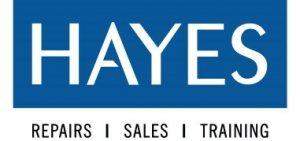Dental Handpiece Maintenance Tips
Properly functioning dental handpieces are crucial to maintaining a pleasant, efficient dental practice. Unfortunately, insufficient maintenance is often the root cause of premature failure for these devices and can lead to unpleasant procedures at best or expensive repairs down the road.
Hayes Handpiece Repair offers professional dental handpiece repair and maintenance services. In this article, we will share some tips on how you can get the best performance and longevity from your high-speed, low-speed, electric, endodontic, surgical or implant handpieces in order to avoid premature failures.
Maintaining your equipment each time you clean it with this list will help ensure that they stay up-to-par and last as long as possible:
Check Your Dental Handpieces’ Air Pressure
You know the old saying, “Too much of anything is not a good thing.” It’s true for pressure too. Too high and you risk damaging your turbine; too low and it won’t perform as well. You should also keep in mind that higher air pressures don’t always mean better performance: some turbines are designed to work best at lower or even zero pressurization! So if you’re trying out a new one, follow the manufacturer’s instructions on what kind of conditions need more/less airflow so they’ll last longer without wearing down quickly – which can be expensive.
Sterilize Your Handpiece
Remove the dental bur from the handpiece, wipe down the exterior & insert it into the pouch/bag. Sterilize handpiece as per manufacturer’s instructions. Always allow the dental handpiece to go through a dry cycle on your sterilizer (if there is a dry cycle on it). Remove the handpiece from the autoclave when the process is complete.
In order to avoid damaging your device, make sure you know the best way of sterilizing it. There are several different methods that can be used for this purpose and each has its own advantages and disadvantages. A dry heat method is not recommended because it will damage any bearings in contact with the machine so we recommend using a gas or steam system instead if possible as they reduce drying time but have an increased risk of potential contamination from outside sources like dust particles.
Never exceed 275ºF (135°C) during the sterilization cycle; use the lowest temperature possible while still achieving proper sterilization of instruments. Subjecting bearings to higher temperatures can cause materials to break down and crack, so handpieces should only be used at room temperature when they are not in operation. Never cool them under cold running water for quick cool downs-quick cooler might actually damage turbine components! If dry heat is utilized on your machine instead, you will have excessive heating that will result in premature failure unless it’s being done properly by trained professionals who know what they’re doing with an infra-red oven or gas heater.
Allow the Autoclave Cycle to Finish
After a long day at work, it can be tempting to just “wing” the autoclave cycle and get your handpiece out of there as soon as possible. But if you’re not careful, you could end up with an even worse case: premature failure! That’s why we recommend three handpieces per operator-one in use, one ready for use while another is being sterilized by running through the cycles or waiting until they are cool enough to handle without risking damage.
Lubricate Your Dental Handpieces
Lubricating your handpieces is an important job. You should always clean them after you have used them and before the next use, so they will last longer! Handpiece spindle/chucks are lubricated once a day with the pointed lubricant adaptor – make sure to apply enough oil too.
Preventing premature handpiece failure with proper care and maintenance is easy. Always clean, lubricate, and sterilize your equipment after every patient visit.
Hayes also offers an in-house or online Dental Handpiece Sterilization and Equipment Maintenance training so you can equip the entire dental team to follow these simple steps.
For our other list of in-house and online training, you may also visit the links below:
Hayes specializes in various dental handpiece repair and dental instrument sharpening and retipping. Our experienced technicians have decades of experience working with all major brands of dental handpieces including:
A-dec | Beyes | Bien Air | Denticator | Hall | Henry Schein | Impact Air | Kavo | Lares | Midwest | Morita | Nobel Biocare | Nouvag | NSK | Patterson | Schein Master | Shamrock | Star | Strauman | Stryker | W&H | Young | American Eagle | HU Friedy | Nordent | PDT




